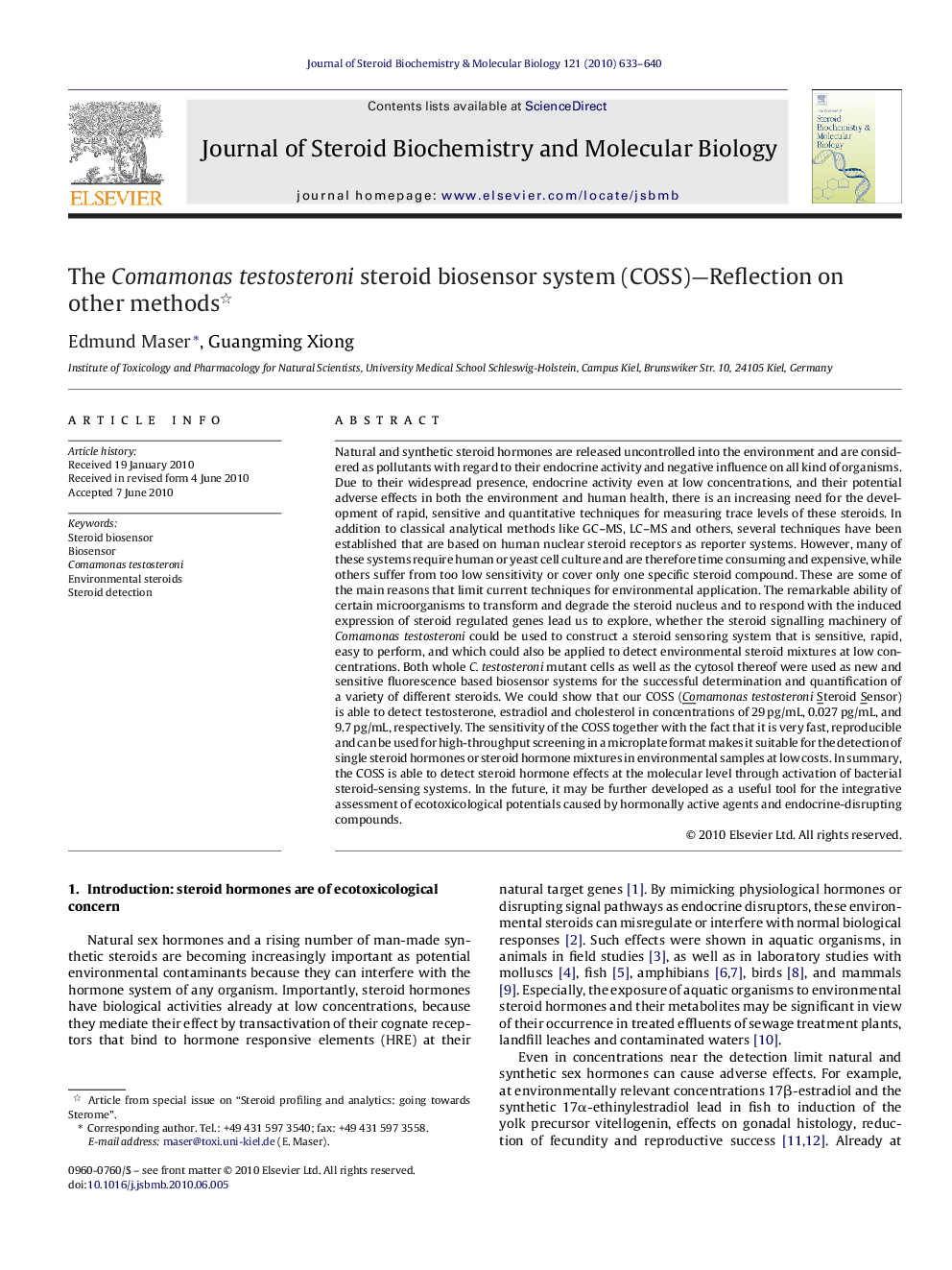| کد مقاله | کد نشریه | سال انتشار | مقاله انگلیسی | نسخه تمام متن |
|---|---|---|---|---|
| 8339727 | 1541042 | 2010 | 8 صفحه PDF | دانلود رایگان |
عنوان انگلیسی مقاله ISI
The Comamonas testosteroni steroid biosensor system (COSS)-Reflection on other methods
دانلود مقاله + سفارش ترجمه
دانلود مقاله ISI انگلیسی
رایگان برای ایرانیان
موضوعات مرتبط
علوم زیستی و بیوفناوری
بیوشیمی، ژنتیک و زیست شناسی مولکولی
زیست شیمی
پیش نمایش صفحه اول مقاله

چکیده انگلیسی
Natural and synthetic steroid hormones are released uncontrolled into the environment and are considered as pollutants with regard to their endocrine activity and negative influence on all kind of organisms. Due to their widespread presence, endocrine activity even at low concentrations, and their potential adverse effects in both the environment and human health, there is an increasing need for the development of rapid, sensitive and quantitative techniques for measuring trace levels of these steroids. In addition to classical analytical methods like GC-MS, LC-MS and others, several techniques have been established that are based on human nuclear steroid receptors as reporter systems. However, many of these systems require human or yeast cell culture and are therefore time consuming and expensive, while others suffer from too low sensitivity or cover only one specific steroid compound. These are some of the main reasons that limit current techniques for environmental application. The remarkable ability of certain microorganisms to transform and degrade the steroid nucleus and to respond with the induced expression of steroid regulated genes lead us to explore, whether the steroid signalling machinery of Comamonas testosteroni could be used to construct a steroid sensoring system that is sensitive, rapid, easy to perform, and which could also be applied to detect environmental steroid mixtures at low concentrations. Both whole C. testosteroni mutant cells as well as the cytosol thereof were used as new and sensitive fluorescence based biosensor systems for the successful determination and quantification of a variety of different steroids. We could show that our COSS (Comamonas testosteroniSteroid Sensor) is able to detect testosterone, estradiol and cholesterol in concentrations of 29Â pg/mL, 0.027Â pg/mL, and 9.7Â pg/mL, respectively. The sensitivity of the COSS together with the fact that it is very fast, reproducible and can be used for high-throughput screening in a microplate format makes it suitable for the detection of single steroid hormones or steroid hormone mixtures in environmental samples at low costs. In summary, the COSS is able to detect steroid hormone effects at the molecular level through activation of bacterial steroid-sensing systems. In the future, it may be further developed as a useful tool for the integrative assessment of ecotoxicological potentials caused by hormonally active agents and endocrine-disrupting compounds.
ناشر
Database: Elsevier - ScienceDirect (ساینس دایرکت)
Journal: The Journal of Steroid Biochemistry and Molecular Biology - Volume 121, Issues 3â5, August 2010, Pages 633-640
Journal: The Journal of Steroid Biochemistry and Molecular Biology - Volume 121, Issues 3â5, August 2010, Pages 633-640
نویسندگان
Edmund Maser, Guangming Xiong,